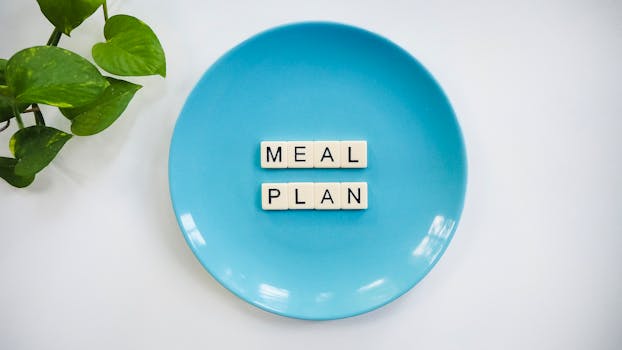Reducing sweetened beverages and processed treats is a common health goal, and adopting a sugar diet intentionally — whether to manage energy, weight, or blood sugar — starts with clear, practical steps. This guide explains where sugar hides, which high sugar foods to avoid, and how to build a sustainable low-sugar eating pattern that fits daily life without turning meals into a chore.
How sugar affects your body and diet choices
Sugar provides quick calories but little lasting nutrition. The body reacts to rapid rises in blood glucose with insulin release; repeated spikes can influence energy, mood, and long-term metabolic health. Understanding the difference between naturally occurring sugars (in fruit and dairy) and added sugars (in many packaged foods) helps you choose low sugar diet foods that satisfy without excess. For official data and recommended limits on added sugars, see the CDC guidance on added sugars for up-to-date numbers and background: CDC: Added Sugars.
Identify foods high in sugar and common culprits
Many everyday items contain surprisingly large amounts of sugar. Knowing which foods high in sugar to check on labels is a quick way to lower intake. Below are common high sugar foods to avoid or limit when you’re aiming for a low-sugar approach:
- Sugary drinks: sodas, fruit-flavored drinks, and sweetened coffees or teas.
- Packaged snacks and bars: many granola bars, energy bites, and cereal bars contain added syrups.
- Desserts and bakery items: pastries, doughnuts, cakes, and sweet rolls.
- Processed breakfast cereals: especially those marketed to children, which often have high added sugar.
- Condiments and sauces: ketchup, barbecue sauce, and some salad dressings can add unexpected sugar.
Low-sugar diet: practical swaps and meal ideas
Switching to a low-sugar diet doesn’t mean deprivation. Small swaps add up. Choose whole grains over refined ones, plain yogurt sweetened with fresh fruit instead of flavored varieties, and water or sparkling water with citrus instead of soda. Emphasize fiber and protein to promote fullness and blunt sugar cravings. Examples of low sugar diet foods include plain Greek yogurt, nuts and seeds, whole fruit (rather than juice), legumes, eggs, and lean meats.
Designing a simple sugar free diet plan
A realistic sugar free diet plan focuses on patterns rather than perfection. Start by cutting or reducing sugary beverages and replacing them with water, unsweetened tea, or coffee with minimal added sweeteners. Plan snacks that combine protein and fiber—apple slices with peanut butter, carrot sticks with hummus, or a small handful of almonds. For desserts, try baked fruit with cinnamon or a small portion of dark chocolate (70% cocoa or higher) to satisfy a sweet tooth with less sugar.
Managing special considerations
If you have diabetes or are at risk, changes to sugar intake should be discussed with your care team. Stable carbohydrate counting, portion control, and consistent meal timing matter. For people managing type 1 or type 2 diabetes, additional guidance can be helpful; see this Type 1 and Type 2 diabetes: The ultimate guide for 2024 for more on treatment and lifestyle strategies.
Tips to reduce sugar without losing flavor
- Read labels: look for added sugars under many names (sucrose, high-fructose corn syrup, maltose, dextrose).
- Cook at home: you control ingredients and can reduce sugar in recipes by one-quarter to one-third without impacting taste.
- Use spices: cinnamon, vanilla, ginger, and citrus zest enhance sweetness perception naturally.
- Gradually decrease sweetness: your palate adjusts, making lower-sugar versions enjoyable over time.
When to seek professional advice
Lowering sugar intake is beneficial for many, but individualized guidance is important if you have metabolic conditions, are pregnant, or take medications that affect blood sugar. A registered dietitian can create a tailored sugar free diet plan that meets nutrient needs and lifestyle preferences.
- Takeaways: Reduced sugar intake is about pattern changes rather than perfection.
- Takeaways: Focus on whole foods, fiber, and protein to decrease cravings.
- Takeaways: Watch beverages, packaged snacks, and condiments for hidden sugars.
- Takeaways: Small, consistent swaps make a low sugar diet sustainable.
FAQ: What are simple first steps to cut sugar?
Start by removing or reducing sugary drinks, swap flavored yogurts for plain with fruit, and choose whole fruit instead of juice. Read nutrition labels and gradually reduce sweetness in recipes so your tastebuds adapt.
FAQ: Can I follow a low sugar diet and still enjoy desserts?
Yes. Choose smaller portions, opt for naturally sweet treats like baked fruit, or try desserts made with less added sugar and more whole-food ingredients. Dark chocolate and recipes that rely on spices can satisfy cravings without excess sugar.
FAQ: How do I know if a product has added sugars?
Check the ingredient list for terms like sugar, syrups, or anything ending in “-ose.” The nutrition facts label also lists “Added Sugars” in grams, which makes comparison easier when choosing packaged items.






